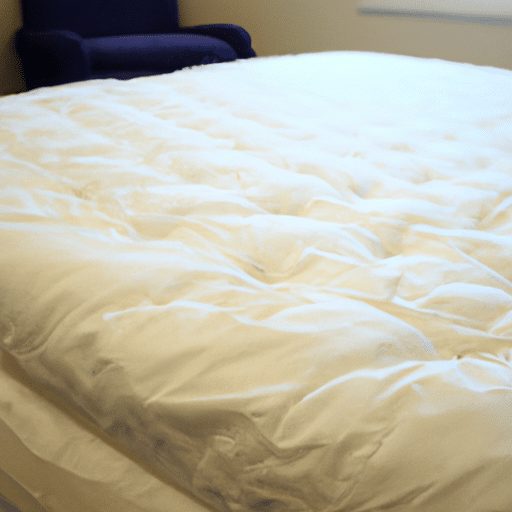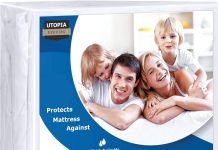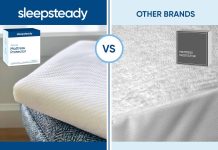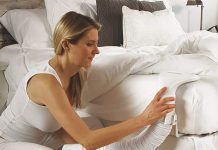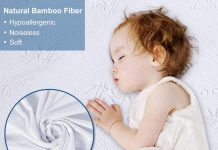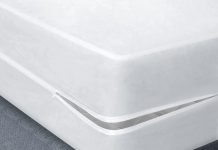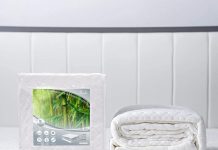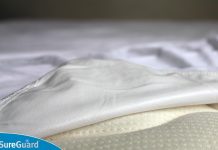Have you ever wondered if a mattress protector can effectively ward off those unwelcome dust mites? Well, you’re in luck! In this article, we will explore the fascinating question of whether a mattress protector can indeed prevent these pesky critters from taking up residence in your bed. Dust mites are tiny creatures that thrive in the dust and dead skin cells found in mattresses, and their presence can trigger allergies and asthma. So, join us as we unravel the truth behind the effectiveness of a mattress protector in keeping these unwanted guests at bay.
Review contents
What are dust mites?
Introduction to dust mites
Dust mites are tiny, microscopic creatures that typically inhabit our homes, especially in areas where there is dust and moisture. These little critters belong to the arachnid family and are closely related to spiders. While they may not be visible to the naked eye, they can cause a great deal of discomfort, particularly for individuals who are allergic to them.
Characteristics of dust mites
Dust mites thrive in warm, humid environments, making mattresses and bedding their perfect breeding grounds. These pests feed on the dead skin cells that we shed daily, and a single dust mite can produce up to 20 fecal pellets per day. These pellets often contain a protein that can trigger allergic reactions in sensitive individuals.
Understanding dust mite allergies
Allergic reactions to dust mites
For some people, exposure to dust mites and their allergens can result in an allergic reaction. When these allergens are inhaled or come into contact with the skin, the immune system reacts, causing symptoms such as sneezing, itching, and congestion. These allergic reactions can significantly impact a person’s quality of life, causing discomfort and interfering with sleep.
Common symptoms of dust mite allergies
The symptoms of dust mite allergies can vary from person to person but often include:
- Sneezing
- Runny or stuffy nose
- Itchy or watery eyes
- Coughing
- Wheezing or difficulty breathing
- Skin rash or hives
Health risks associated with dust mite allergies
While dust mite allergies do not pose serious health risks, they can cause significant discomfort and affect a person’s overall well-being. Prolonged exposure to dust mite allergens can also trigger asthma attacks in individuals with asthma, making it essential to address and minimize the presence of dust mites in our living spaces.
What is a mattress protector?
Definition and purpose of a mattress protector
A mattress protector is a removable cover designed to encase and protect your mattress from various elements, including dust mites, spills, stains, and allergens. It acts as a barrier between you and your mattress, ensuring a clean and hygienic sleeping surface.
Types of mattress protectors
There are different types of mattress protectors available in the market, each offering varying levels of protection and comfort. The most common types include:
- Terry cloth mattress protectors: These protectors are made of a soft, absorbent fabric that offers a plush feel and additional moisture protection.
- Vinyl mattress protectors: Vinyl protectors provide a waterproof barrier, making them ideal for preventing spills and stains from reaching the mattress.
- Allergen-blocking mattress protectors: These protectors are specifically designed to block dust mites, allergens, and other microscopic particles from penetrating the mattress.
How do dust mites invade mattresses?
Dust mite colonization in mattresses
Dust mites are experts at finding their way into mattresses. As we sleep, we shed dead skin cells, which serve as a food source for these pests. Once in the mattress, dust mites reproduce rapidly, leading to a colony that can number in the thousands.
Why mattresses are an ideal habitat for dust mites
Mattresses provide an ideal environment for dust mites due to the warmth and humidity they offer. Our bodies generate heat when we sleep, creating the perfect temperature for dust mites to thrive. Additionally, mattresses can absorb sweat and other bodily fluids, providing a source of moisture that these pests need to survive.
How dust mites infest mattresses
When we sleep or come into contact with the mattress, we shed dead skin cells that dust mites find irresistible. These tiny creatures can easily make their way into the mattress through gaps or openings in the fabric. Once inside, they quickly reproduce, creating a thriving population that can cause allergies and other health issues.
Benefits of using a mattress protector
Preventing dust mite infestation
One of the primary benefits of using a mattress protector is that it creates a physical barrier that prevents dust mites from infiltrating your mattress. By encasing your mattress with a protective cover, you significantly reduce the risk of a dust mite infestation, ensuring a healthier sleeping environment.
Blocking dust mite allergens
Mattress protectors designed to block allergens can effectively reduce the presence of dust mite allergens in your bed. These protectors have a tightly woven fabric that prevents dust mite waste and other microscopic particles from penetrating the mattress and coming into contact with your skin or respiratory system.
Enhancing mattress durability
A mattress protector acts as a shield, guarding your mattress against spills, stains, and general wear and tear. By preventing these elements from reaching the mattress directly, a protector can extend the lifespan of your mattress, allowing you to enjoy a comfortable and supportive sleep surface for longer.
Maintaining cleanliness and hygiene
Regularly washing and maintaining a mattress protector helps to keep your sleeping environment clean and hygienic. By preventing stains and spills from seeping into the mattress, you can maintain a fresh and odor-free bed, promoting better sleep and overall well-being.
How does a mattress protector work?
Physical barrier
The primary function of a mattress protector is to create a physical barrier between you and your mattress. By completely encasing the mattress, it prevents dust mites, allergens, and other contaminants from accessing the surface you sleep on.
Anti-allergenic fabrics
Many mattress protectors are made from hypoallergenic materials that are specifically designed to repel dust mites and other allergens. These fabrics have tightly woven fibers that prevent the microscopic particles from passing through, effectively reducing your exposure to potential allergens.
Waterproofing properties
Some mattress protectors also offer waterproofing properties, creating an additional layer of protection against spills, accidents, and moisture. These protectors are especially beneficial for individuals with young children, pets, or anyone prone to nighttime accidents.
Choosing the right mattress protector
Compatibility with mattress size and depth
When selecting a mattress protector, it is crucial to consider the size and depth of your mattress. Ensure that the protector you choose can adequately cover and fit snugly around your mattress, providing full protection.
Material selection
The material of a mattress protector can impact its overall performance and comfort. Look for protectors made from hypoallergenic and breathable materials that are easy to care for and maintain.
Special features and additional benefits
Consider any additional features or benefits that you may desire in a mattress protector, such as cooling properties, noise-free materials, or extra cushioning. These features can enhance your sleeping experience and add value to your investment.
Easy installation and maintenance
Choose a mattress protector that is easy to install, remove, and clean. Look for protectors that can be machine-washed and dried, ensuring convenience and hassle-free maintenance.
Does a mattress protector guarantee complete dust mite prevention?
Effectiveness of mattress protectors
While mattress protectors are highly effective in reducing the risk of dust mite infestations and minimizing exposure to allergens, they cannot guarantee complete prevention. However, when used in conjunction with regular cleaning and maintenance practices, mattress protectors can significantly improve the overall cleanliness and hygiene of your sleeping environment.
Limitations and considerations
It is important to note that a mattress protector should not be seen as a standalone solution. Regular vacuuming, washing bedding in hot water, and reducing clutter in the bedroom are important additional measures to minimize dust mite populations and prevent allergies.
Additional measures to reduce dust mites
In addition to using a mattress protector, there are several other steps you can take to reduce the presence of dust mites in your home. These may include:
- Regularly vacuuming your mattress and bedding
- Washing bedding in hot water regularly
- Using allergen-proof pillow covers and duvet covers
- Keeping humidity levels low
- Minimizing the use of carpeted flooring and opting for hardwood or tile surfaces
Maintaining your mattress protector
Cleaning and washing instructions
To maintain the effectiveness of your mattress protector, it is essential to follow the cleaning and washing instructions provided by the manufacturer. Most mattress protectors can be machine washed and tumble dried on low heat. However, it is important to avoid using harsh chemicals or bleach that could damage the protective properties of the cover.
Frequency of maintenance
Regular maintenance is crucial to keep your mattress protector clean and hygienic. We recommend washing your mattress protector at least once every three to six months, or more frequently if spills or accidents occur.
Importance of replacement
Over time, the protective qualities of a mattress protector may diminish. This can occur due to wear and tear or repeated washing. It is important to replace your mattress protector when signs of deterioration, such as cracks, holes, or diminished waterproofing, become apparent.
Conclusion
Summary of the effectiveness of mattress protectors
In conclusion, mattress protectors play a vital role in preventing dust mite infestations and minimizing exposure to allergens. They create a physical barrier, block allergens, and enhance the durability of your mattress. While they cannot guarantee complete dust mite prevention, when used alongside proper cleaning and maintenance practices, they significantly contribute to a cleaner and healthier sleeping environment.
Importance of regular cleaning and maintenance
Regular cleaning and maintenance of your mattress protector are crucial to ensure its long-term effectiveness. By following the manufacturer’s instructions for cleaning and washing, you can maintain a clean and hygienic sleeping surface, promoting better sleep and overall well-being. Remember to replace your mattress protector as needed to maintain its protective properties. With a quality mattress protector and proper care, you can sleep peacefully, knowing that you are safeguarded against dust mites and their allergens.

